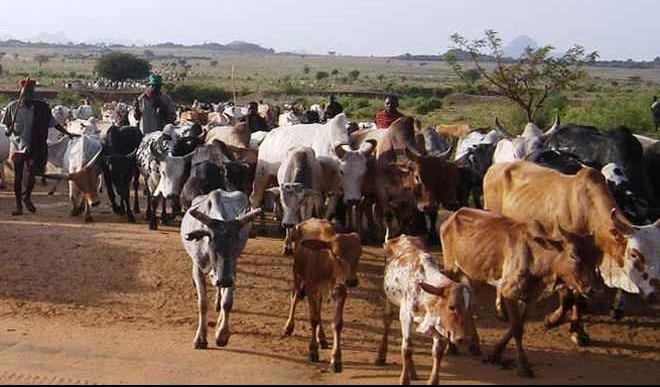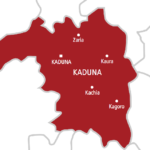
The constant visits of the Vice-President to hot spots of clashes between pastoralists and farmers, is a good indication that this national dilemma is at last on the front burner of the government. It was also heart-warming and reassuring to see the President in the midst of his cattle in his Daura farm in the front page picture carried by Daily Trust of 11th December 2017. One persistent advocate of finding a solution to these clashes is Dr Jinaidu Maina who recently retired as the nation’s Chief Veterinary Officer and Director Livestock. I have always spoken to him on how to resolve this perennial problem that is now turning into a national embarrassment. As a vet, Jinaidu is a thoroughbred, having attained all the qualifications and accolades in the field. He is a fellow of College of Veterinary Surgeons of Nigeria and a former President of Veterinary Council of Nigeria. He sent me this piece which I found interesting. Please read on:
The assertion by many Nigerians that the global best practice for rearing cattle is in ranches, is an alternate fact or more appropriately post truth. The truth is that in Sub-Saharan Africa only between 15-20% of cattle are in ranches. But what even strong advocates of pastoralism know as not post-truth is the inability of our national herd estimated at 19.5m cattle to meet the animal protein demand. National demand for meat stands at over 1m metric ton and ever increasing. Nigeria by 2025 will have an estimated population of 300m becoming the 4th most populous country in the world. So demand for animal protein will grow exponentially. Therefore the need to modernize our livestock industry for food security and to take advantage of our huge internal market is obvious.
Modernizing our cattle production has been a difficult nut to crack. Several attempts have been made from importation of purebred cows in the 1940s to the establishment of dairy farms at Agege and Vom to the 1970s establishment of Livestock Improvement and Breeding Centres for the production of heifers to present day production and sales of crossbred heifers by NAPRI and private farms. These programmes have not had the desired impact. So, there is need for paradigm shift.
Recall that against all odds Nigeria had successfully modernized the production of one livestock specie, viz.: poultry. The tipping point for modernizing poultry was importation and later local production of Day old Chicks (DOC) and improved local production of maize. Other contributory factors were favourable bank financing, availability of health care services and a large internal market. Today Nigeria has the biggest commercial poultry in Africa and thanks to this transformation this industry worth over $3b is flourishing in every urban city in Nigeria. This remarkable transformation was made to happen by deliberate government policies and the Nigerian spirit of entrepreneurship. But can this accomplishment be repeated with cattle?
Before that, let’s discuss a related successful breed improvement programme for another specie, goat. A sharp drop in revenue from tanneries occurred in Sokoto State in the 1970s. This was attributed amongst others to poor quality of leather due to genetic adulteration of the indigenous Red Sokoto goat. The Red Sokoto goat is famous for its internationally acclaimed Moroccan leather which commands a high premium price. To combat this, the State designed an ingenious breeding program to improve fecundity of the goats. After obtaining communities buy-in, the State purchased hundreds of purebred Red Sokoto bucks. These bucks termed, Bunsuran gwamnati (Government bucks) were handed over to Sokoto municipal Ward heads during breeding season. Using Town criers, all goats’ owners were advised to either sell off or castrate their bucks. On an agreed date, these high libido billy goats were set loose on the local does and they immediately set to work. Although there are no empirical data on actual percentage increase in fecundity, it was generally agreed that the impact of the programme on productivity was shattering. Bunsuran gwamnati for years ran around doing their thing, welcomed in many houses and never ended up as Ese-ewu. Those were the days.
Lessons learnt from these 2 examples are that with appropriate technology, modern production system can be established to exist side by side, in harmony with the traditional system and with the right advocacy traditional producers can accept modern innovations.
Now let us attempt to apply these principles to cattle. The catalyst for cattle modernization would be mass production of quality breeding stock viz; heifers, preferable in-calf (pregnant) and young breeding bulls. These are the equivalent of DOCs in poultry. Of course, such animals can be imported, but not in the required quantity and frequency as in the case of DOCs due to size, cost and healthcare issues. The best option is to produce them locally and in sufficient quantity. A critical element would be a national breeding policy, but I have it on good authority that the Federal Ministry of Agriculture is working on it.
There are 2 quick options: establishment of commercial ranches and big dairy farms. Ranches in Africa are located in areas where the rainfall is low or poorly distributed that ordinary crop agriculture is impossible. So, commercial ranches can be established virtually in every part of this country but most appropriately in the arid areas.
The real challenge is how to establish and successfully ran these farms. My take, Government should engage special interest groups, provide the enabling conditions and leave the rest to private sector. While leaving complex dairy farming exclusively to the Dangotes, but for ranches, Nigerian Army should be included. The idea of Nigeria Army partnering with Argentina or Brazil in ranching was once muted, this is a good idea. Ranching will fit in perfectly with army regular resettlement training programme. Most ideal locations for initial ranches will be Sambisa grazing reserve (4800ha) and part of Gidan Jaja grazing reserve (365,000ha) in Borno and Zamfara states respectively for obvious reasons. Let us see if insurgents, rustlers, rural bandits and local bad boys will steal Soja animals and live in peace. The spin off from this will be food and national security with bonus production of critical skilled manpower for ranching which is currently absent. The Army world over have history of introducing new technologies. Anybody in doubt should google history of GPS, logical framework approach or even starching clothes.
On attending particular weight or age, keeping weaners and calves on farms create economic losses. These animals should be regularly harvested in bulk to go to special farms and enterprises where they are fed cheap powered milk. On attaining required age and weight, females are finished as in-calf heifers, while young males are sold as breeding bulls or to feedlots. The availability of these breeding stock will stimulate rapid investments in smallholder and large farms start-ups (aka ranches in Nigeria), upgrading of existing farms and most importantly, provide many pastoralists an unhindered access to quality breeding stock for genetic improvement of their herds. This would modernise our cattle industry and change it for the better.
On a final note, good Minister, Audu Ogbe says, pastoralists are farmers too, with genuine grievances. Sadly, some local sheriffs say no, pastoralists are just marauding pistoleros killing people for nothing with impunity. What is needed is tough anti-open grazing law. If you don’t like it, too bad, in your own interest skip town by sunset. Adiós.
Re: House of Infamy
I agree with the decision of the Borno State government to preserve the house of the leader of the dreaded Boko Haram leader Mohammed Yusuf as museum because he led a group with clear international connections through affiliation with Al-Qaeda and IS. It has been established that the group has received enormous amounts of arms and training from as far as Iraq and beyond. A multinational army and cooperation has been designed to fight the insurgents. So the group’s devastating effect cannot just be compared with other armed insurrections like Maitatsine. The enormous destruction caused by the group covers the entire north-east geographical region so it is appropriate to accord a historical status to that horrendous experience with the creation of a museum. Buhari Hassan




